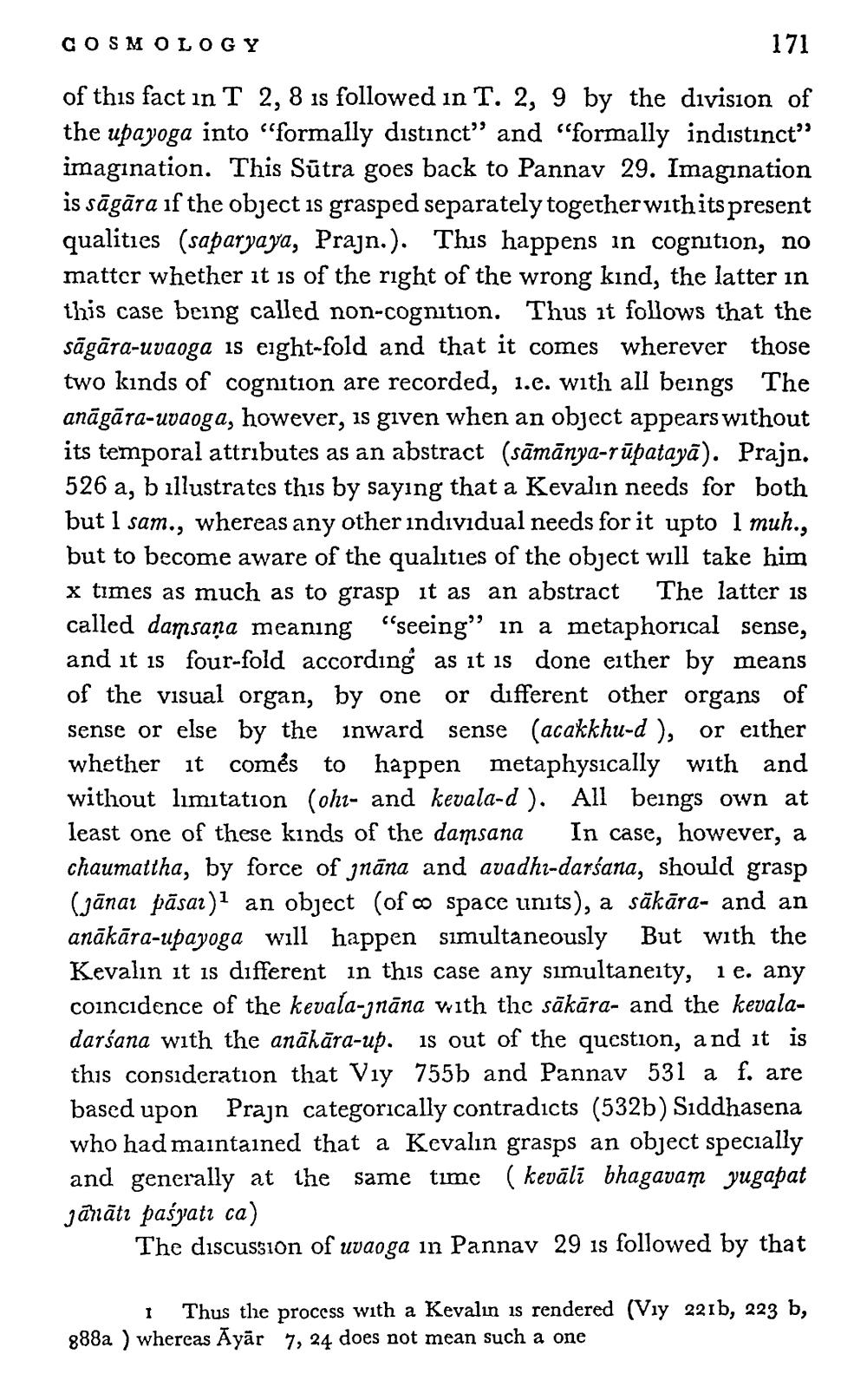________________
COSMOLOGY
171
of this fact in T 2,8 is followed in T. 2, 9 by the division of the upayoga into "formally distinct” and “formally indistinct” imagination. This Sūtra goes back to Pannav 29. Imagination is sāgāra if the object is grasped separately together with its present qualities (saparyaya, Prajn.). This happens in cognition, no matter whether it is of the right of the wrong kind, the latter in this case being called non-cognition. Thus it follows that the sāgāra-uvaoga is eight-fold and that it comes wherever those two kinds of cognition are recorded, 1.e. with all beings The anāgāra-uvaoga, however, is given when an object appears without its temporal attributes as an abstract (sāmānya-Tūpatayā). Prajn. 526 a, b illustrates this by saying that a Kevalın needs for both but I sam., whereas any other individual needs for it upto 1 muh., but to become aware of the qualities of the object will take him x times as much as to grasp it as an abstract The latter is called damsaņa meaning "seeing” in a metaphorical sense, and it is four-fold according as it is done either by means of the visual organ, by one or different other organs of sense or else by the inward sense (acakkhu-d ), or either whether it comes to happen metaphysically with and without limitation (ohr- and kevala-d). All beings own at least one of these kinds of the damsana In case, however, a chaumattha, by force of ynāna and avadhe-darśana, should grasp (jānai pāsar)1 an object (of co space units), a säkāra- and an anākāra-upayoga will happen simultaneously But with the Kevalın it is different in this case any simultaneity, ie. any coincidence of the kevala-znāna with the sākāra- and the kevaladarśana with the anākāra-up. is out of the question, and it is this consideration that Viy 755b and Pannav 531 a f. are based upon Prajn categorically contradicts (532b) Siddhasena who had maintained that a Kevalın grasps an object specially and generally at the same time ( kevāli bhagavam yugapat jānātı þaśyatı ca)
The discussion of uvaoga in Pannav 29 is followed by that
1 Thus the process with a Kevalın is rendered (Vıy 221b, 223 b, 888a ) whereas Āyār 7, 24 does not mean such a one




